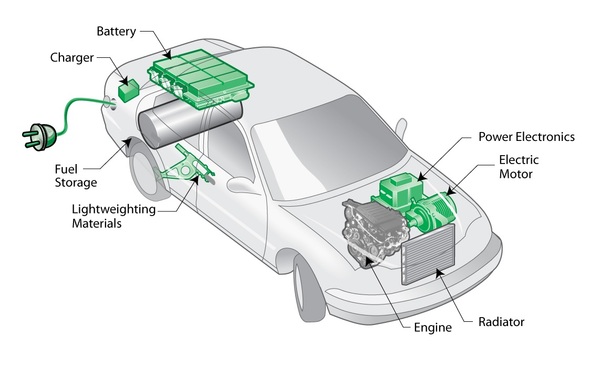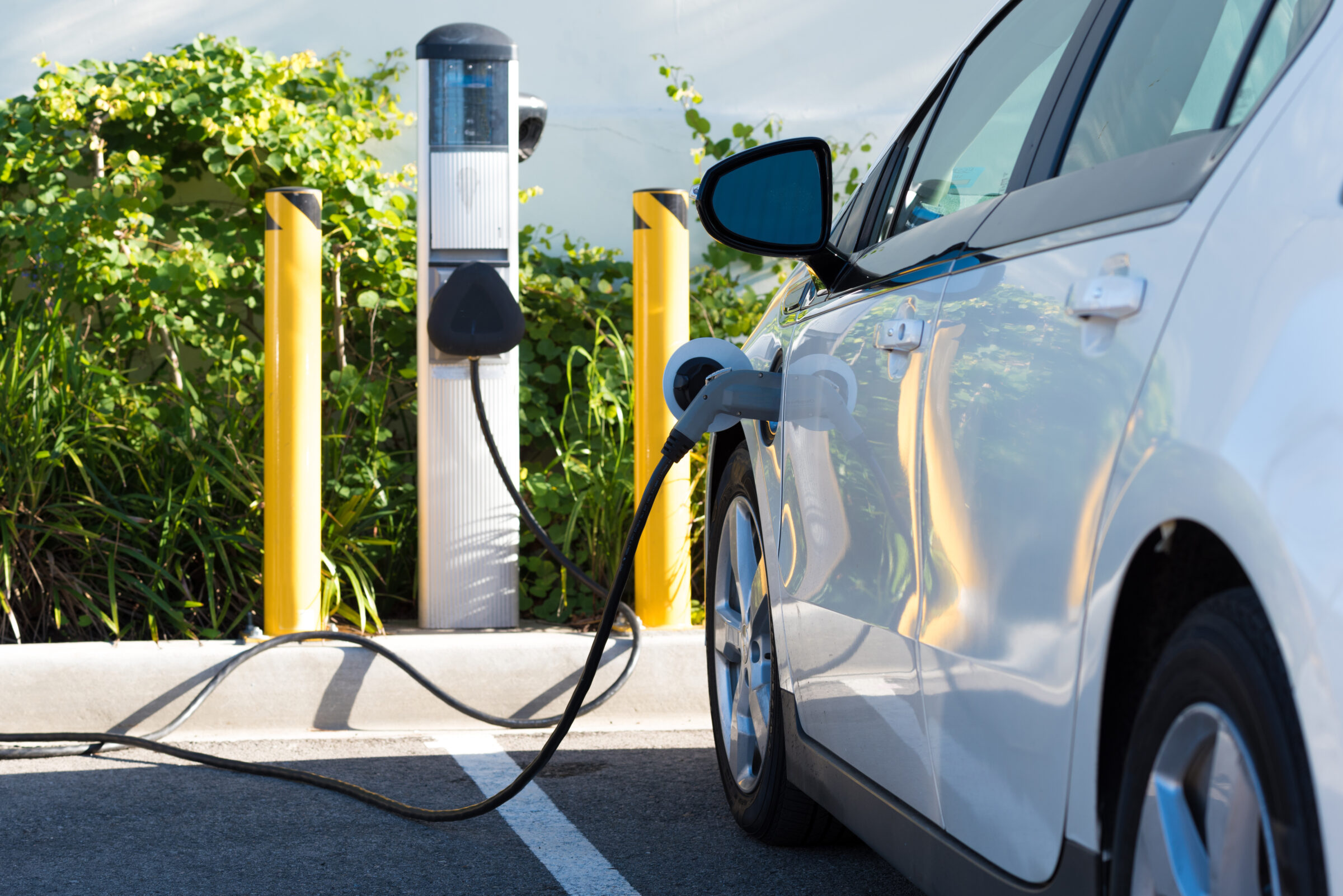Blog The Case for Plug-in Hybrid Vehicles
Crossposted at Discovery.orgAll-electric battery vehicles (BEVs) have become all the rage, particularly with the political class, who see them as a magical means to combat climate change. We know, of course, there is no such thing as magic. But that won’t stop politicians from making proclamations, followed by policies that bring about bad, even destructive, results.
Climate science is highly complex, as the Earth has gone through many warming and cooling periods over billions of years with widely varying amounts of carbon dioxide in the atmosphere long before man arrived on the scene. I have no reason to doubt the global climate is warming, and that humans are significant contributors. But the crusade to end gasoline-powered vehicles by forcing consumers to purchase BEVs is as simpleminded as it is unscientific.
With respect to CO2 emissions, it is true that BEVs, overall, have a distinct emissions advantage over conventional gasoline-powered vehicles. Yet politicians seeking to ban the purchase of conventional gasoline-powered vehicles, as has become law in California beginning in 2035 and soon to be followed in Washington state, Oregon, Massachusetts, and New York, have made the gross mistake of pursuing a policy prescription without thought to the environmental, economic, and logistical issues their policies will create. This is not to say BEVs can’t be a part of combating climate change. But they shouldn’t be the only solution when it comes to vehicle emissions.
In the policy push toward BEVs, little consideration has been given to the benefits of an attractive alternative: hybrid vehicles, which also deliver significantly lower CO2 emissions relative to conventional gasoline-powered vehicles. Hybrid vehicles come in two forms: hybrid electric vehicles (HEVs), such as the well-known Toyota Prius, and plug-in hybrid vehicles (PHEVs), such as the Toyota Prius Prime. In decreasing order of CO2 emissions, HEVs have lower emissions than conventional gasoline vehicles, PHEVs have lower emissions than HEVs, and finally, BEVs have zero emissions from the vehicle itself. BEVs, however, have a high emissions footprint in the manufacturing process prior to delivery of the vehicle, and then afterward in the production of electricity to charge the vehicle (called “well-to-wheel emissions”). So BEVs are not, as often touted, “zero-emissions” vehicles. They produce, instead, what is called a CO2 equivalent.
According to the U.S. Department of Energy, about 2,817 pounds of well-to-wheel CO2 equivalent is produced over the lifetime of the average BEV. The average PHEV, on the other hand, generates 1,884 pounds of well-to-wheel CO2 equivalent from electric operation and 2,939 pounds of CO2 emissions from gasoline operation, for a total of 4,824 pounds of CO2 equivalent. While 70% more CO2 equivalent than a BEV, this is still about 62% less than a conventional gasoline-powered vehicle. Thus, there are considerable CO2 emissions savings with PHEVs, and it shouldn’t be ignored that even HEVs produce 45% lower overall CO2 emissions than conventional gasoline engines. The question is how much CO2 savings is enough? Politicians give us no clear answer while ignoring the environmental impact of their all-BEV push.
As Manhattan Institute Senior Fellow Mark P. Mills has documented in his 2020 report, “Mines, Minerals, and ‘Green’ Energy: A Reality Check,” the manufacture of batteries for BEVs is highly destructive to the earth. This environmental impact can’t be ignored simply because BEVs generate the lowest CO2 emissions relative to other types of vehicles. For every single electric car battery weighing about 1,000 pounds, some 500,000 pounds of earth need to be extracted and processed. And for every 1,000 pounds of lithium produced for BEVs, 500,000 pounds of water must be used for processing in some of the most arid regions of the world. Yet politicians turn a blind eye to these realities. Given the relatively small amount of BEVs currently on the road, imagine the environmental impact of scaling up lithium and other rare earth mineral production to 300 million cars in America.

As a BEV owner, I’ve personally experienced the poor state of the public fast-charging network, which creates a serious barrier to electric vehicle adoption, particularly on long road trips. Fast DC chargers are too few, too costly to use, fail regularly, and often don’t deliver at the stated charge rating, which extends charge times. Given the low range of virtually all BEVs, this is particularly problematic in rural areas, where motorists must travel long distances and can be seriously inconvenienced due to a lack of chargers. While I’m certain these problems will be solved over time, it will be a long time before there is a viable business case for the plentiful “mom and pop” gasoline stations to offer electric vehicle charging, as their business model depends on high-margin store purchases during quick, low-margin gasoline dispensing. With the high costs of installation, it will be a struggle to make them a common sight.
When factoring in the environment and the feasibility of an all-BEV fleet of vehicles, PHEVs provide the best practical way forward relative to BEVs, obviating the need for a massive infrastructure shift over the next decade that will cause enormous logistical headaches. PHEVs can take full advantage of existing gasoline infrastructure, whose owners will never be inconvenienced if a charger is unavailable. As more public charging stations are made available over time due to technological advances and lower prices, PHEV owners will enjoy more opportunities to charge their batteries, which will be critical to operating at maximum efficiency, producing the lowest CO2 emissions, and lowering fuel costs.
Additionally, from an environmental perspective, PHEVs have a considerable advantage to BEVs because their batteries can be one-fourth to one-fifth the size. Consequently, the environmental damage caused by a PHEV or HEV would be one-fourth to one-fifth that of a BEV. And again, hybrids attain this dramatic environmental advantage while still providing dramatically lower emissions than conventional gasoline vehicles.
In summary, moving to a primarily PHEV model, along with HEVs and BEVs so motorists have maximum choice, represents a far superior way forward both environmentally and practically to the current drive for government-imposed BEV mandates. Doing so would alleviate the need for a massive shift in infrastructure to serve the 300+ million vehicles in America. Small gasoline providers could continue to operate their business model as they do now, and over time a network of electric chargers could be built at a realistic and sustainable pace to serve the needs of BEV, PHEV, and HEV owners, without the enormous pressure that would be forced on them by an all-BEV model. The time is now for politicians to become more thoughtful in their approach to hybrid and electric vehicles, so we don’t continue down an unworkable, impractical, and unhelpful path.


